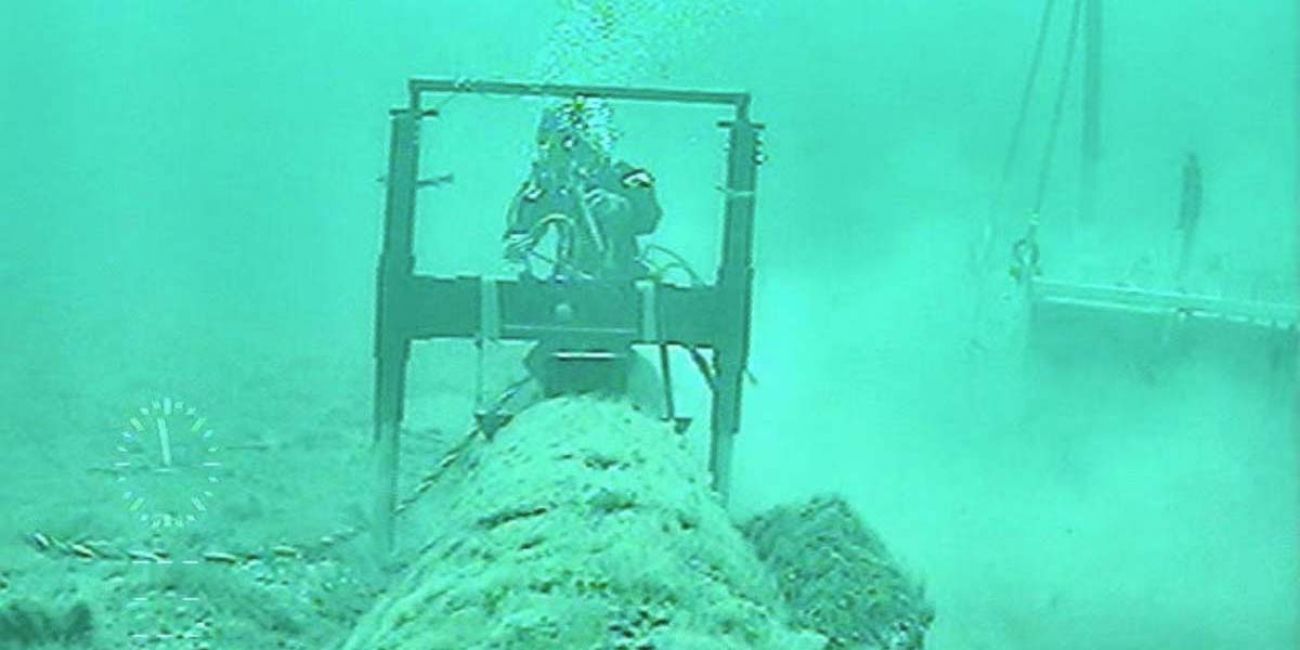Judge: Enbridge can resume full operations on Michigan Line 5 pipeline

An Ingham County judge has given Enbridge Energy clearance to resume normal operations of Line 5 in the Straits of Mackinac, lifting a partial shutdown that had been in place for months after Enbridge discovered damage to an anchor support on the pipeline in June.
Judge James Jamo approved the re-start in a revised restraining order issued Wednesday at Enbridge’s request. It came with the consent of state lawyers who had asked for the shutdown in the immediate wake of the damage, after federal regulators and an independent expert retained by the state concluded the pipeline was not structurally damaged.
The order comes days after federal regulators with the federal Pipeline and Hazardous Materials Safety Administration, or PHMSA, notified Enbridge on Sept. 4 that the agency and outside experts had reviewed inspection records for the east leg and “did not identify any integrity issues” on the east leg, where an anchor support had been wrenched out of place.
Related stories:
- Enbridge just wants a permit. Michigan critics want to bring down Line 5
- 10 years later, Kalamazoo River spill still colors Enbridge pipeline debate
- Lawyers for Michigan argue to keep Enbridge Line 5 closed for safety
- Michigan regulator: Enbridge needs permission to move Line 5 into tunnel
- Enbridge Line 5 shutdown prompts Michigan debate over risks vs. economic harm
As a result, William Rush, PHMSA’s acting director for the region encompassing Michigan, wrote that federal regulators had “no objection” to the company resuming operations on the east leg.
Enbridge spokesman Ryan Duffy said the company plans to resume petroleum transports in the east leg by Thursday afternoon. Duffy did not immediately respond to a question from Bridge Michigan about whether the damaged anchor support has been repaired.
In a statement Wednesday, Vern Yu, Enbridge’s executive vice president and president of liquids pipelines, called the decision “very positive for the many residents and businesses in Michigan and the Great Lakes region who depend on the energy Line 5 delivers.”
In reality, the reopening may mean little for Enbridge’s customers. Enbridge had previously told Bridge the partial shutdown did not impact its ability to deliver petroleum, because the company was able to meet existing demand using only the west leg of the dual-span line. Duffy said that remains true today.
The news comes more than two months after Jamo ordered the pipeline shut down June 25, acting on a request from Michigan Attorney General Dana Nessel following revelations that an anchor support on the dual-span pipeline’s east leg had sustained damage from a then-unknown source. Enbridge and U.S. Coast Guard officials have since concluded that a contract vessel working for the company likely caused the damage.
Nessel and other Line 5 opponents have long argued that the pipeline poses an unacceptable risk of an oil spill in the straits. Her temporary shutdown request is tied to a larger lawsuit in which she seeks to permanently shutter the pipeline by voiding the 1953 easement that gives Enbridge permission to operate Line 5 in the straits.
Nessel spokesman Ryan Jarvi said Wednesday’s order “doesn’t change the Attorney General’s position in her lawsuit that the pipelines are a clear and present danger.”
“The Attorney General’s office continues to pursue the decommissioning of Line 5 in its lawsuit filed last year against Enbridge to protect the public health, safety and welfare of Michigan’s residents and its natural resources,” Jarvi said in an email to Bridge.
Revelations of the June damage reignited debates about the safety of Line 5, a 67-year-old pipeline that sits exposed at the bottom of the Straits.
It wasn’t the first time Line 5 had sustained damage in recent years. In 2018, for instance, a six-ton anchor hit the pipeline, denting it, and causing $100 million in damages to another company’s underwater power cables, which also caused 800 gallons of oil to be spilled into the Straits.
Enbridge opponents argue such incidents prove the pipeline poses an unacceptable risk to the straits, where one study concluded an oil spill could cause $45 billion in damages.
In a webinar with reporters Wednesday, Beth Wallace, a Great Lakes partnerships manager for the National Wildlife Federation, reiterated calls for a permanent shutdown. In the wake of the damaged anchor support, her group and other Line 5 opponents have lobbied Gov. Gretchen Whitmer to revoke the state easement that allows Enbridge to operate in the Straits.
“There’s no possible way that any reasonable person could argue that a 70-year-old pipeline should remain in the Great Lakes,” Wallace said, adding that “we are risking our entire economy and our Great Lakes and our fresh drinking water by allowing this to continue.”
After discovering damage to the east leg in June, Enbridge briefly shut down both legs of the pipeline and notified state officials about the damage. Within two days, it resumed operations on the west leg.
That prompted harsh words from Whitmer, who said the company had failed to include state regulators in its response. Nessel followed by asking Jamo to shut down the pipeline until Enbridge handed over information about the damage and gave state regulators time to assess any lingering safety concerns.
In court filings, Enbridge argued Michigan has no role to play in pipeline regulation. Rather, company lawyers argued, Enbridge answers to federal regulators with PHMSA.
Jamo disagreed, and initially ordered a complete shutdown of the pipeline. He later allowed Enbridge to resume operations on the west leg after investigations concluded the leg had not sustained damage beyond exterior scrapes unrelated to the east leg’s damaged anchor support.
Wednesday’s order appears to largely resolve the legal dispute about the pipeline’s safety arising from the damaged anchor support. Enbridge and state lawyers are scheduled to provide Jamo with a status report on Friday to determine “what if any issues remain to be resolved.”
Meanwhile, Enbridge is pursuing a spate of permits it needs to begin construction on an underground tunnel it says would eliminate the risk Line 5 poses to the straits.
That process has begun to shape into a new battleground over the pipeline’s fate, as the Michigan Public Service Commission considers whether to let Enbridge move Line 5 into the planned tunnel. The company’s opponents hope to use the yearlong deliberations to raise concerns about the pipeline’s safety record, environmental risks tied to its continued operations and the tunnel project, threats to Tribal treaty rights in the Great Lakes, and the climate impact of approving new fossil fuel infrastructure in Michigan.
Michigan Environment Watch
Michigan Environment Watch examines how public policy, industry, and other factors interact with the state’s trove of natural resources.
- See full coverage
- Subscribe
- Share tips and questions with Bridge environment reporter Kelly House
Michigan Environment Watch is made possible by generous financial support from:
Our generous Environment Watch underwriters encourage Bridge Michigan readers to also support civic journalism by becoming Bridge members. Please consider joining today.
See what new members are saying about why they donated to Bridge Michigan:
- “In order for this information to be accurate and unbiased it must be underwritten by its readers, not by special interests.” - Larry S.
- “Not many other media sources report on the topics Bridge does.” - Susan B.
- “Your journalism is outstanding and rare these days.” - Mark S.
If you want to ensure the future of nonpartisan, nonprofit Michigan journalism, please become a member today. You, too, will be asked why you donated and maybe we'll feature your quote next time!






